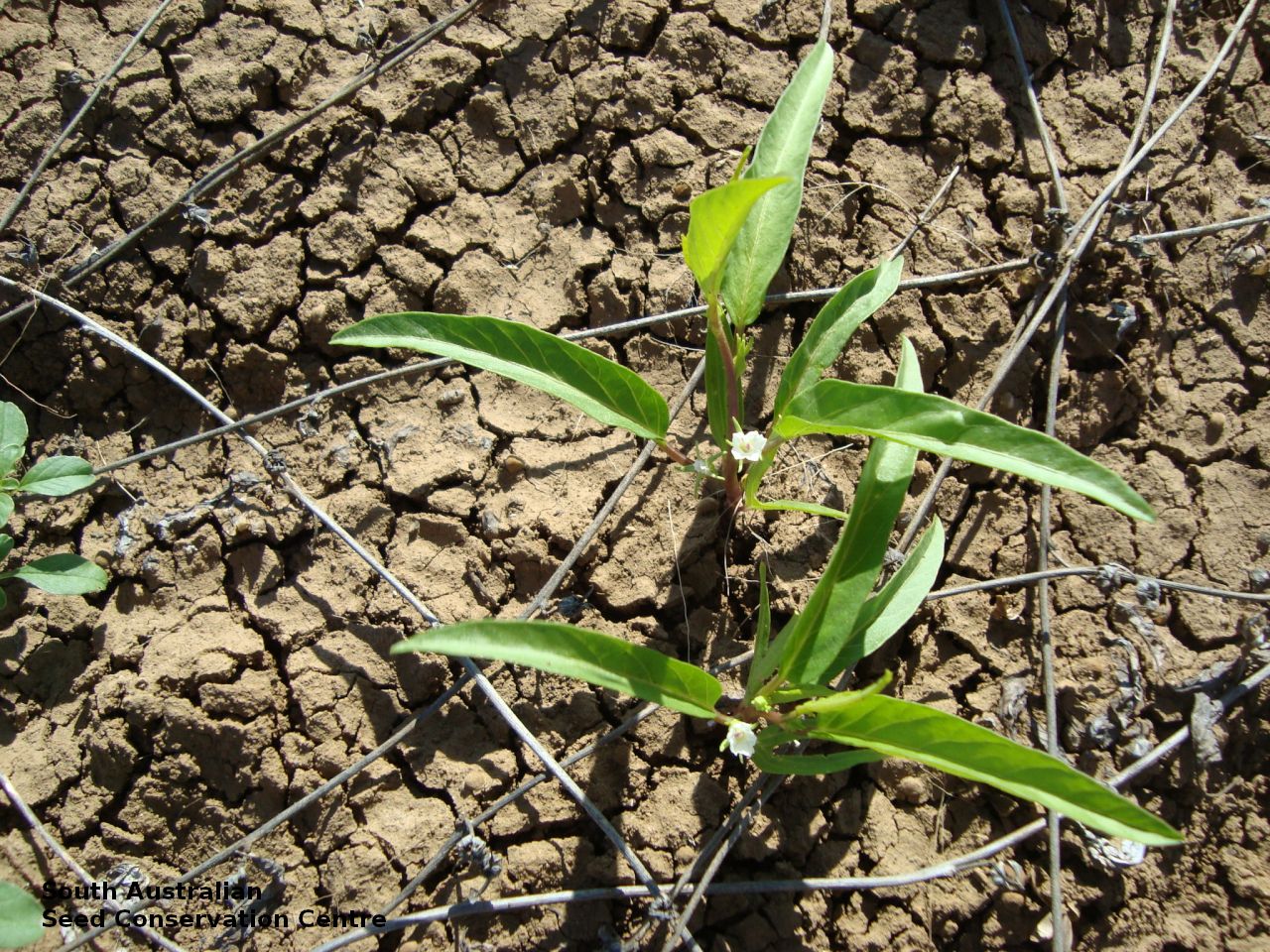
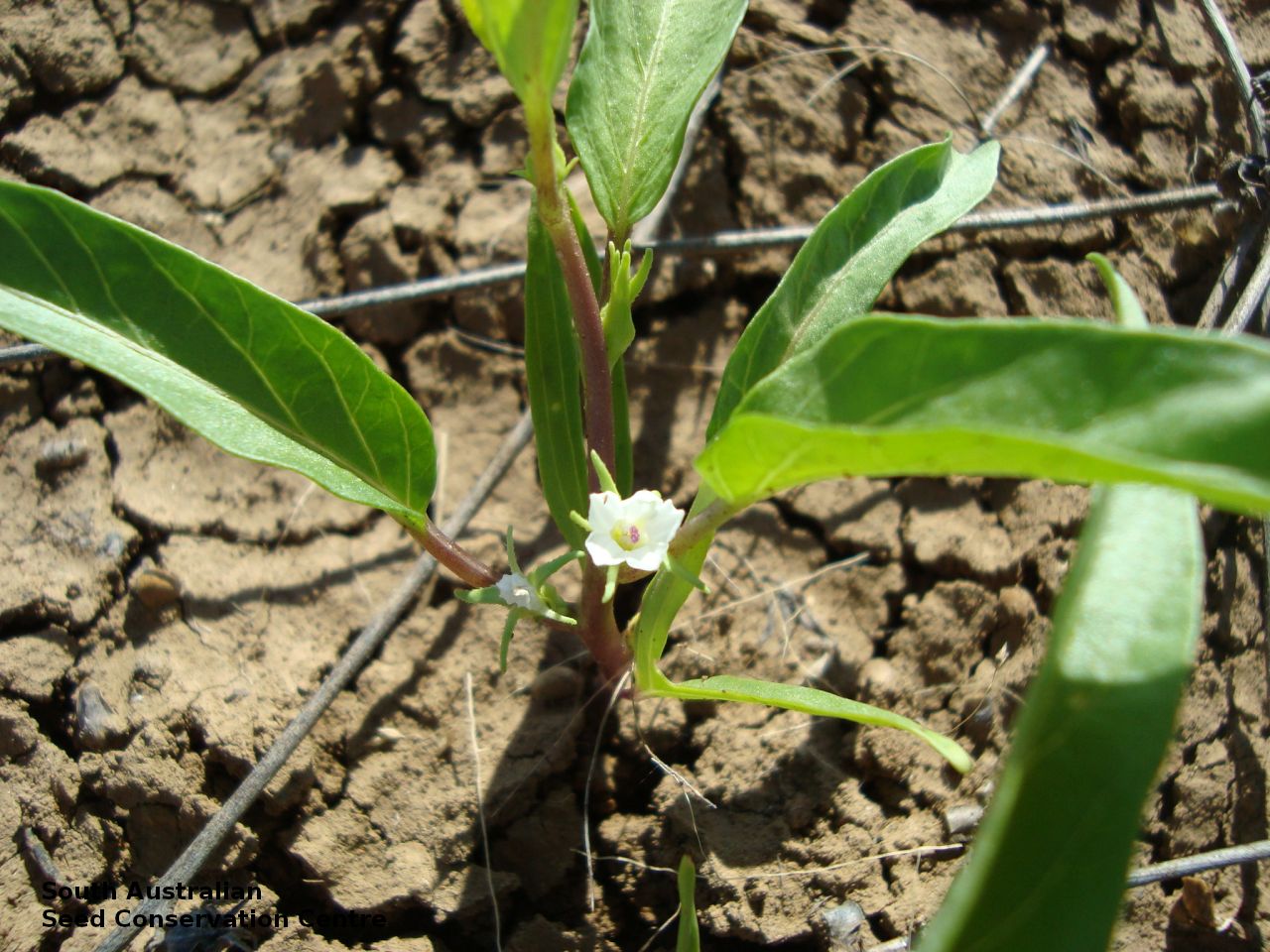
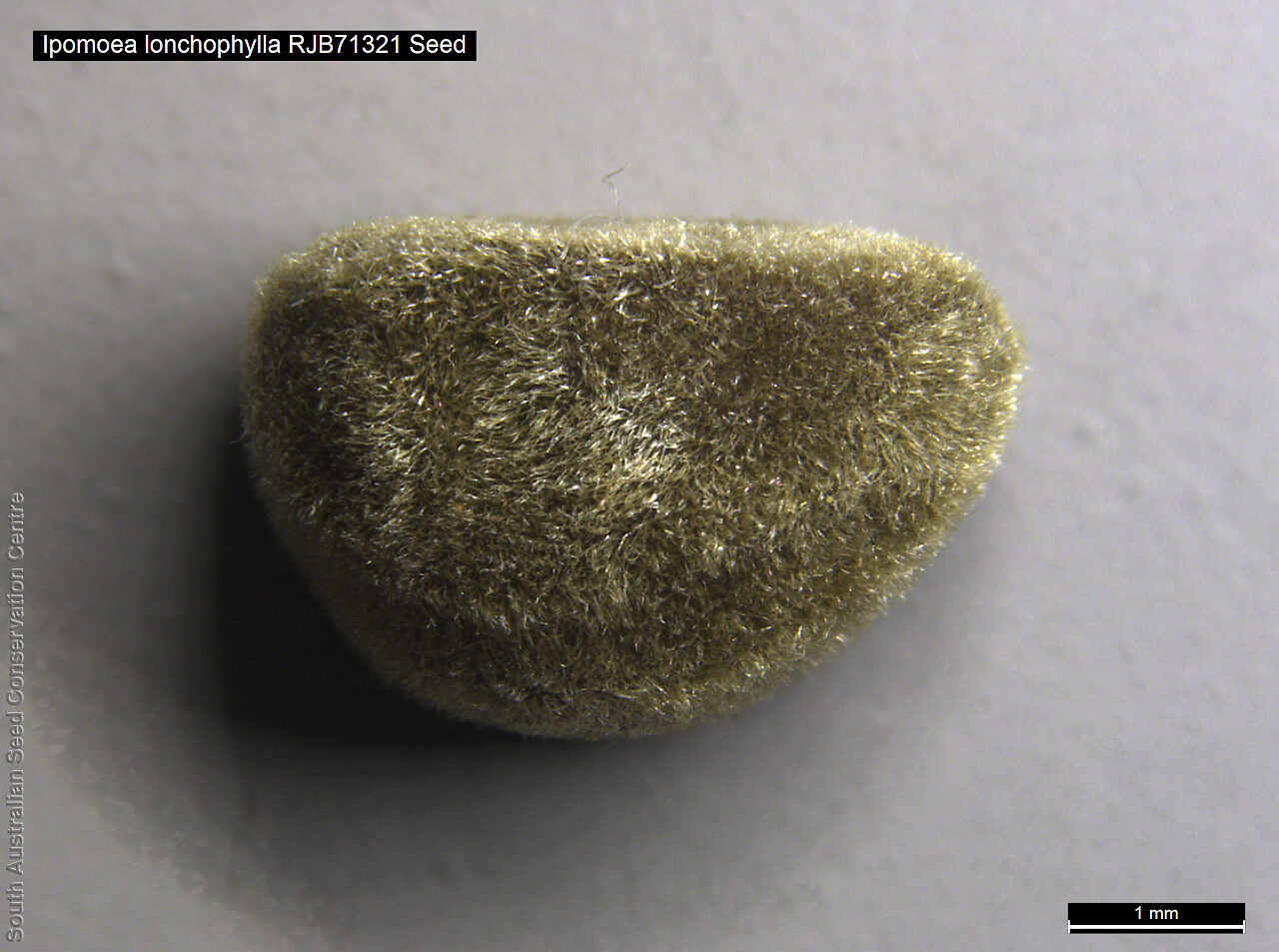
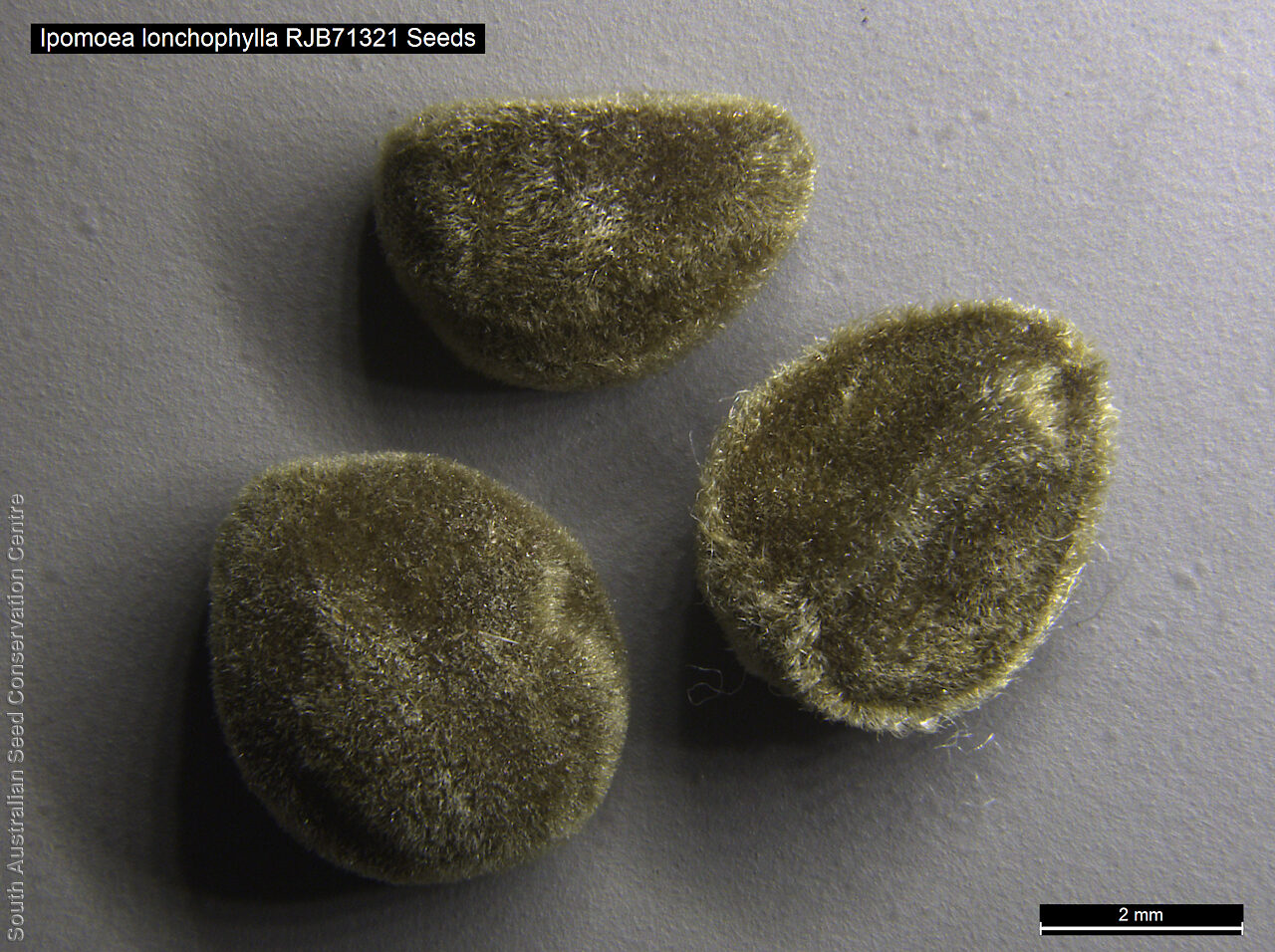

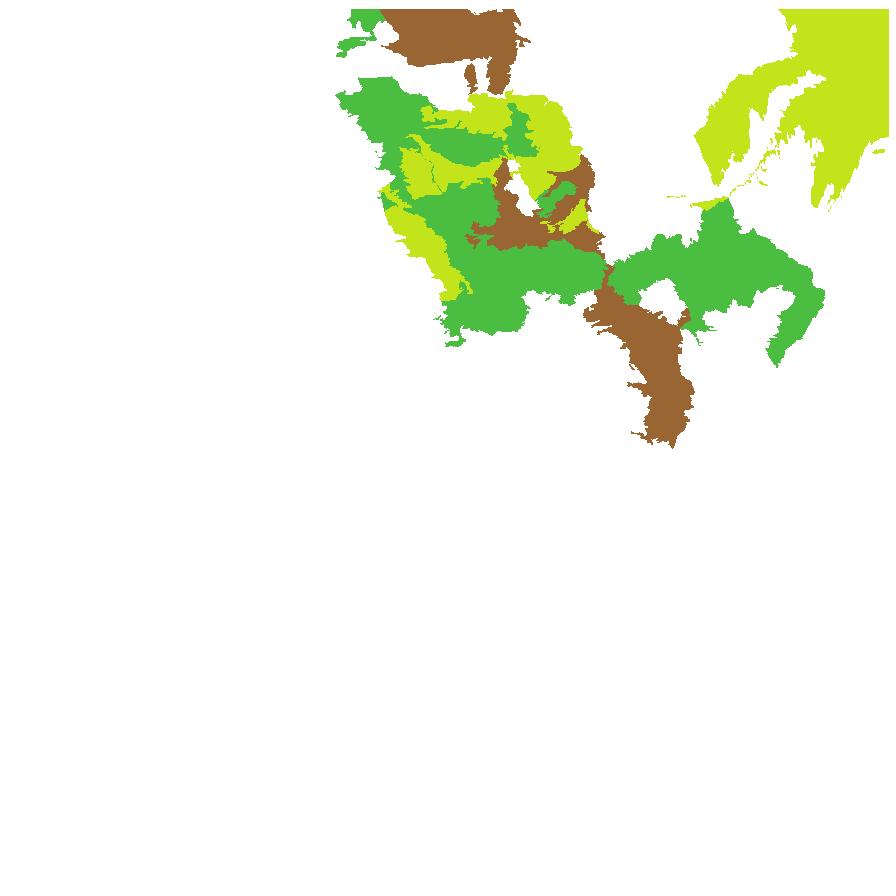
Botanical art
Common names
Common Cow-vine
Cow-vine
Etymology
Ipomoea from the Greek 'ips' meaning a worm (mistakenly supposed by Linnaeus to mean the bindweed) and 'homoios' meaning like; referring to its twining habit. Lonchophylla from the Greek 'lonchos' meaning spear-shaped and 'phyllon' meaning a leaf.
Distribution and status
Found in the north-eastern part of South Australia, growing on clay soils in tussock grasslands. Also found in Western Australia, Northern Territory, Queensland and New South Wales. Native. Common in South Australia. Common in the other states.
Herbarium region: Lake Eyre
NRM region: South Australian Arid Lands
AVH map: SA distribution map (external link)
Plant description
Glabrous to sparsely hairy annual herb with trailing stems. Leaves ovate to ovate-lanceolate, to 10 cm long and 4 cm wide, acute to obtuse, mucronate, base attenuate to barely truncate. Inflorescence axillary with a single small white funnel-shaped flower. Flowers throughout the year but mainly between November and June. Fruits are brown globular capsule, with a persistent style base and splitting longitudinally into 4 valves. Seeds are dark brown to black sectoroid seed to 4.5 mm long and 4 mm wide, with dense hairs. Seed embryo type is folded.
Seed collection and propagation
Collect seeds between January and December. Collect capsules that are maturing, turning brown and contain hard seeds inside. Capsules can be opened or unopened and some seed can be collected from the ground under the plant. Place the capsules in a tray and leave to dry for one to two weeks. Then rub the capsules gently by hand or with a rubber bung to dislodge the seeds. Use a sieve to separate the unwanted material. Store the seeds with a desiccant such as dried silica beads or dry rice, in an air tight container in a cool and dry place. From one collection, the seed viability was high, at 95%. This species has physical dormancy that needs to be overcome for the seed to germinate (e.g. nicking the seed coat).
| Location | No. of seeds (weight grams) | Number of plants | Date collected | Collection number Collection location | Date stored | % Viability | Storage temperature |
|---|---|---|---|---|---|---|---|
| BGA MSB | 2,500 (58.1 g) 2,500 (58.1 g) | 13-Mar-2007 | RJB71321 Lake Eyre | 1-Aug-2007 | 95% | -18°C |
Number of plants: This is the number of plants from which the seeds were collected.
Collection location: The Herbarium of South Australia's region name.
% Viability: Percentage of filled healthy seeds determined by a cut test or x-ray.